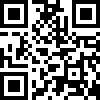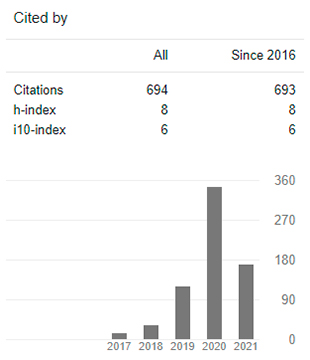ICTs: A new trend in inclusive education
DOI:
https://doi.org/10.29394/Scientific.issn.2542-2987.2020.5.17.17.311-327Keywords:
educational technology, universal education, diversification of educationAbstract
The real challenge for society in the 21st century is to achieve the practice of inclusive education in educational contexts and society in general, since technology plays a fundamental role in all learning systems. The application of educational technology through the use of virtual platforms, facilitates access to knowledge quickly, efficiently and personalized; In addition, it adapts to different rhythms and learning styles because it is a multifunctional resource. Therefore, achieving a true inclusive education with the use of technological means and its variety of virtual platforms will facilitate the development of significant learning, the application of the Universal Design of Learning DUA and will promote a learning process that meets educational needs. of all, through active methodological strategies. Finally, web 2.0 as an educational resource, allows the social participation of people at any time and in any place, where the teacher is a mediator and the student the protagonist of their knowledge and builder of their training.
Downloads
References
Cabero, J., & Fernández, J. (2014a,b). Una mirada sobre las TIC y la Educación Inclusiva. Comunicación y Pedagogía: nuevas tecnologías y recursos didácticos, (279-280), 38-42, ISSN: 1136-7733. España: Centro de Comunicación y Pedagogía.
Cueva, J., García, A., & Martínez, O. (2019a,b). El conectivismo y las TIC: Un paradigma que impacta el proceso enseñanza aprendizaje. Revista Scientific, 4(14), 205-227, e-ISSN: 2542-2987. Recuperado de: https://doi.org/10.29394/Scientific.issn.2542-2987.2019.4.14.10.205-227
García, L. (2014). Web 2.0 vs web 1.0. Contextos Universitarios Mediados, 14(1), 1-9, e-ISSN: 2340-552X. Recuperado de: http://e-spacio.uned.es/fez/view/bibliuned:UNESCO-contextosuniversitariosmediados-14_1
González, K., & Rincón, D. (2013). El docente-prosumidor y el uso crítico de la web 2.0 en la educación superior. Sophia, (9), 86-101, e-ISSN: 2346-0806. Recuperado de: https://dialnet.unirioja.es/servlet/articulo?codigo=5163655
Guillén, G., & Flores, D. (2019a,b). Las tecnologías de la información y la comunicación (TIC) en la educación inclusiva. En J. Bello, & G. Guillén, Educación Inclusiva. un Debate Necesario. ISBN: 978-9942-783-07-3. Azogues, Ecuador: UNAE - EP.
Ibarra, A., & Llata, D. (2010). Niños nativos digitales en la sociedad del conocimiento: acercamientos conceptuales a sus competencias. Razón y Palabra (72), 1-25, e-ISSN: 1605-4806. Recuperado de: https://www.redalyc.org/articulo.oa?id=199514906028
Martínez, O. (2018). Uso de las Tecnologías de la Información y la Comunicación en la Educación Básica. Revista Scientific, 3(10), 154-174, e-ISSN: 2542-2987. Recuperado de: https://doi.org/10.29394/Scientific.issn.2542-2987.2018.3.10.8.154-174
Pizarro, R. (2001). La vulnerabilidad social y sus desafíos: una mirada desde América Latina. ISBN: 92-1-321790-0. Santiago de Chile: Naciones Unidas.
Quelca, J. (2019). Nativos digitales vs. Inmigrantes digitales ¿Brecha generacional, brecha cognitiva? ¡Una mirada psicopedagógica!. SentiPiensa: Revista especializada en Humanidades y Ciencias Sociales, 2(1), 89-96, Cochabamba, Bolivia: Universidad Adventista de Bolivia. Recuperado de: http://investigacion.uab.edu.bo/pdf/Revista-Educacion-2019.pdf
Downloads
Published
How to Cite
Issue
Section
License
The content of the journals of this site, are under a Creative Commons Attribution-Noncommercial-Share Alike 4.0 International License.













